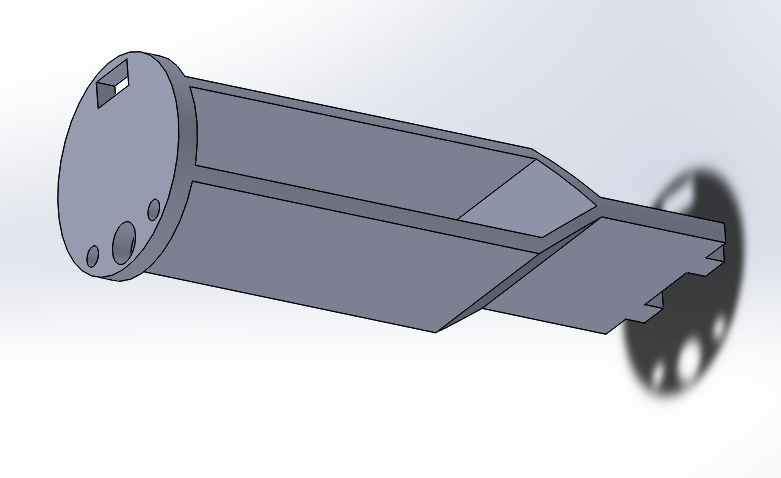Electronics/Hardware
An ATMega328 microcontroller, with Arduino software, handles the communication between the different devices:
- MPU6050 Accelerometer
- BMP180 Altimeter
- SD Card Reader
- Radio Transmitter

Not represented in the above diagram are the two LEDs: one for power check, and the other for status.
I chose every module with the size in mind, as everything has to fit in a 32mm diameter rocket tube. A 3D printed structure holds everything in place.
Everything is powered through a 450mAh, 7.4V LiPo battery. It may seem a tad oversized, but I want the transmitter to emit bursts as long as possible!
Software
The microcontroller is an ATMega328, running Arduino, for the sake of simplicity. The program has three main "states"
- Monitoring: it runs continuously, checking for a rise in acceleration indicating takeoff. The radio module continuously emits a tone to allow some fine tuning of the receiver.
- Take-off/Coasting Phase: the data is logged from the accelerometer along with the altimeter into the SD card as fast as the ATMega can do. A timestamp is added.
- Parachute Deployment: logging continues, the transmitter turns on and emits a continuous pulse.
- Landing/Beacon: after a fixed delay (about 1min), the transmitter transmits short bursts and will continue to do so as long as it stays on.
 M.daSilva
M.daSilva









 t3chflicks
t3chflicks
 R. Scott Coppersmith
R. Scott Coppersmith

 Daniel
Daniel
Hey, i was wondering if you still have the codes for the arduino, because I want to do the same project. Only i am not good with arduino programming so i was wondering if you are willing to share your code. Thank you in advance!